Although tornadoes and hurricanes have destroyed nearly all of the oak, pine and pecan trees that once stood on the grounds at the Renfro house on North 10th Street in Opelika, it has survived unharmed and remains much as it did when built in 1900 by Frank Monroe Renfro.
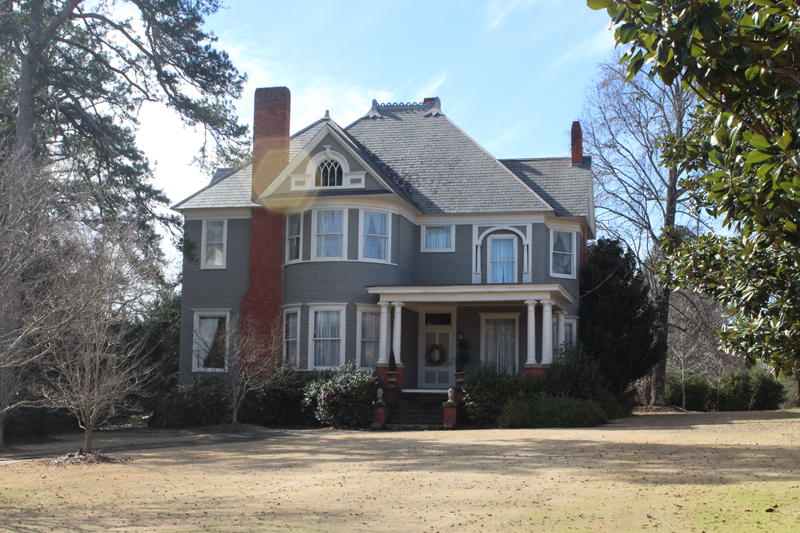
Frank Monroe and his brothers Peter Forney and Noah Parker were well known in the 1870s-80s. They owned various business interests in East Alabama, including an opera house, a bank, Spring Villa, a grocery, lime kiln, farming land and a fertilizer plant, among others. The brothers served various offices in the community, including mayor, probate judge and on the city council. While the saga of the Renfro family intertwines with the history of East Alabama, their pilgrimage southward began many generations earlier.
Most of the Renfros or Renfrew who immigrated to America came from the royal burgh of Renfrew in Renfrewshire County, Scotland, having been there since at least 1296. In 1404, King Robert III erected the Barony of Renfrew and bestowed it on his son James I of Scotland. Prince Charles of England carries on the title, Baron of Renfrew. The common variant of the name Renfrew today is Renfro.
The earliest known Renfros in America arrived in the 1600s settling in Virginia, as documented in various texts. William Renfro, who was born in 1734, grew up on the farm next to the Washington family. George Washington and William played together as children, fishing and hunting at the farms. They both wanted to become surveyors and learned the trade from William’s brother James. Following his boyhood friend into adulthood, William fought Indian battles to protect early settlers in outlying areas. He became a surveyor along with his brother James, who worked with Daniel Boone to settle Tennessee and Kentucky. William spent the winter at Valley Forge with Washington and was present at the surrender of General Cornwallis at Yorktown. He died in 1830 at age 96.
His descendants and other members of the Renfro family were also surveyors and land speculators, as they pushed into new territory. The entire family traveled as a clan and joined the Donaldson Expedition, exploring in flat boats on what they called the Great River. Native Americans attacked many times, and several were killed. The clan settled in Kentucky in what is still known today as Renfro Valley.
After the Revolutionary War, the Renfros scattered, many going to the West. Bartlett Renfro, born in 1781, and his cousin John were the only ones to come south. Bartlett and John were circuit riders, and the places they stopped to preach were called Renfro Stations. Bartlett and his family settled in Anniston while Native Americans were still in the area. Bartlett’s seventh child, Noah Renfro, settled in Cusseta where he was a farmer and rural mail carrier. After his death at a young age, his wife Nancy brought their children, Peter Forney, Franklin Monroe, Mary Selinah Jane and Noah Parker Jr. to Opelika. Frank Monroe was born Benjamin Franklin, but when he was only 8 years old he went to the Chambers County Courthouse and had his name changed to Franklin Monroe. No one knows exactly why he changed his name.
During the Civil War, Frank heard that his brother Peter and other soldiers stationed at West Point were hungry. He put potatoes in a bag and carried it to West Point. He was known as always interested in helping others. Frank married Mary Ida Traylor, and they had two children, Mary Elan Renfro (Mrs. Charles V. Ingram Jr.) and Forney Renfro Sr., who grew up in Opelika.
The Renfro brothers first entered the grocery business. Later they expanded to include the Chewacla Lime Works at the old lime kiln south of Opelika, Spring Villa, and had farming interests in Mt. Jefferson. They were also owners of the Renfro Opera House. Old newspaper accounts tells of young ladies from Salem giving a grand concert at the opera house July 27, 1877, when it was called the Broadway Hall. It is recorded that Gov. Bobby Taylor of Tennessee spoke at the opera house. Maps dated 1893 list it as stage and scene (not in use) with a bank on first floor. When the brothers ended the grocery business, they founded Renfro Brothers Bank. It is also believed that the brothers owned stock in the railroad since they always had a free pass. They also owned a business in West Point, and many other businesses were associated with their name.
In 1886, Frank and Noah founded the First National Bank of Opelika. Frank was president, and Noah was vice president, later becoming president. As well as being businessmen, the brothers were interested in the community. Peter served as mayor of Opelika, Frank was probate judge for Lee County, while Noah was a member of the city council. Frank had a white steamer and a car he called the “Jackrabbit.” For years he would pick up children on Sunday morning in the Jackrabbit and take them to Sunday school, and then take older people to church. Years later the cars were sold to be part of a collection belonging to an actor in Hollywood.
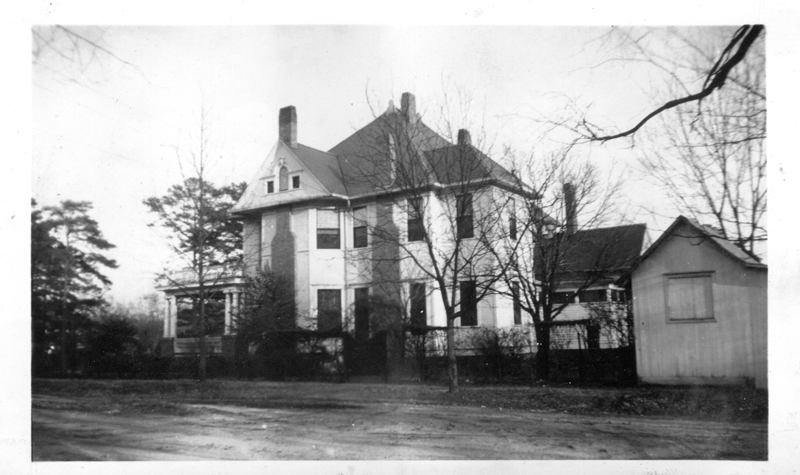
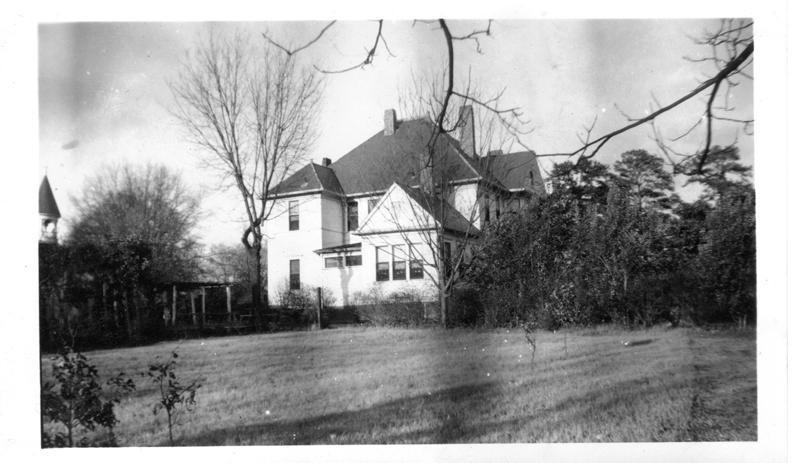
In 1900, Frank built the Renfro house on North 10th Street with 18 rooms and 11 fireplaces, each one different. The downstairs features excellent woodwork of oak and heart pine floors. Upstairs the woodwork and floors are both pine. The house has brilliant stained glass and the original light fixtures. Noah built a house across the street. At one time, the circus was held in front of these houses. Noah’s house was later torn down, and the chandelier was moved to Frank’s house.
Peter’s son Joe had the first residential telephone exchange in the area, which he sold in the early 1900s to Southern Bell. Afterwards, Joe went into the ice manufacturing business, dividing the town into four sections with each one having a horse and wagon. Children would follow the ice wagon on summer days and hold their hands out when the ice was broken to catch the cold shavings. After Frank’s son, Forney, went to work at the bank, he became president as well as a representative in the state legislature. Forney and his wife Alberta lived in the house and had five children with their second child, Forney Jr. born there.
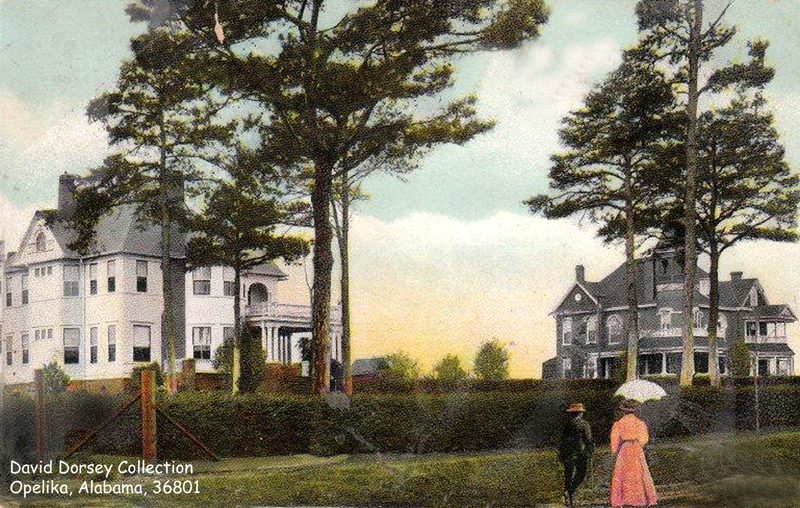
Frank only drank Spring Villa water, as did the rest of the family. When Forney Jr. was a small child he would ride with a workman in a mule drawn wagon to Spring Villa to get drinking water. The trip took all day. They brought water back in five gallon bottles, which were filled in crates. When needed, the bottles were inverted into a frame that held ice and had a spigot. The bottle and frame rested on a marble shelf in a downstairs hallway.
After Forney Jr.’s father died, he went to work at the First National Bank. He left to serve in the armed forces and returned to the bank in 1953. He stayed there until he retired at the end of 1977 and became the third member of his family in succeeding generations to have been president of the bank. Forney and his wife Eloise moved into the Renfro house on North 10th Street in 1953 and raised five children. Forney was involved in many civic organizations.
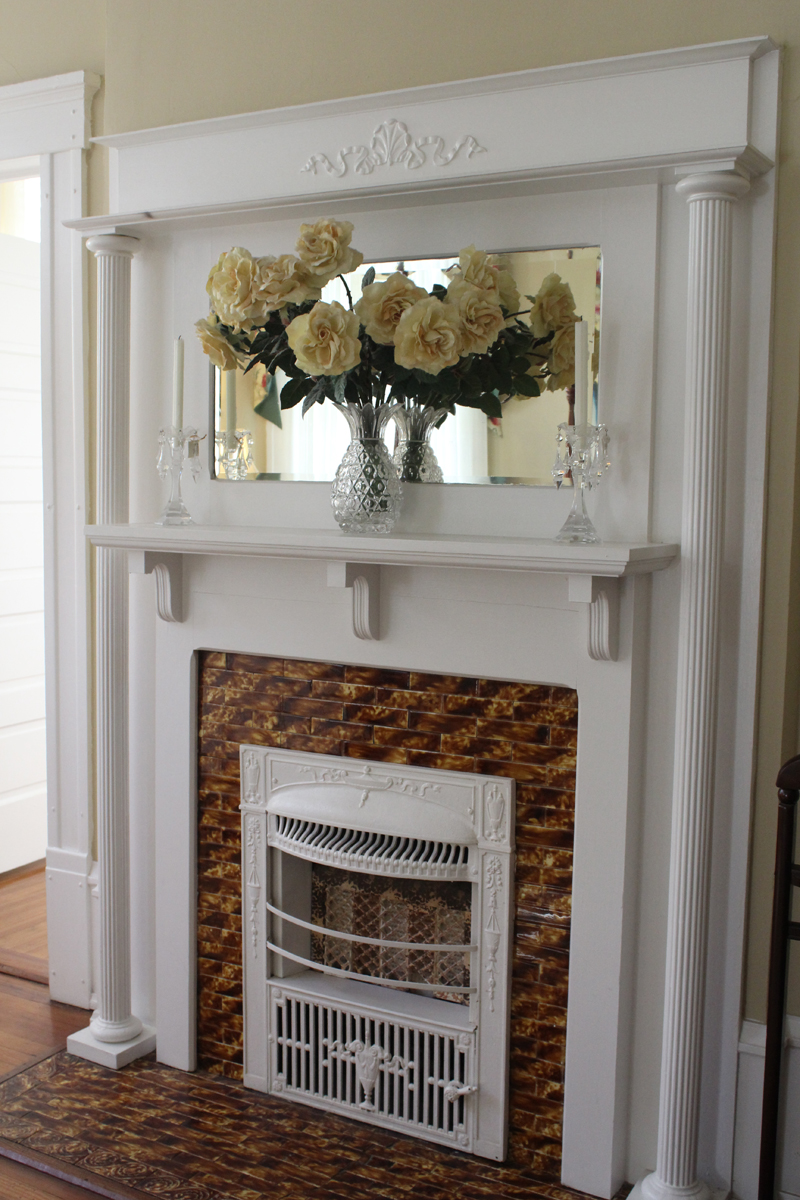 Since the house stayed in the Renfro family it changed little. In the mid 1960s, Forney and Eloise had part of the porch removed and replaced the wooden railing with iron. The kitchen was rearranged, and a bath was added upstairs. In 1988, Annette and Terry Andrus, president of the East Alabama Medical Center, purchased the Renfro house where they raised their three children. The Andruses updated the kitchen and bathrooms. Today, the house looks much the same as when constructed with heart pine floors, oak mantels and staircase gleaming with a rich patina. The stately house continues its place with each unfolding chapter in the history of Opelika and East Alabama.
Since the house stayed in the Renfro family it changed little. In the mid 1960s, Forney and Eloise had part of the porch removed and replaced the wooden railing with iron. The kitchen was rearranged, and a bath was added upstairs. In 1988, Annette and Terry Andrus, president of the East Alabama Medical Center, purchased the Renfro house where they raised their three children. The Andruses updated the kitchen and bathrooms. Today, the house looks much the same as when constructed with heart pine floors, oak mantels and staircase gleaming with a rich patina. The stately house continues its place with each unfolding chapter in the history of Opelika and East Alabama.







